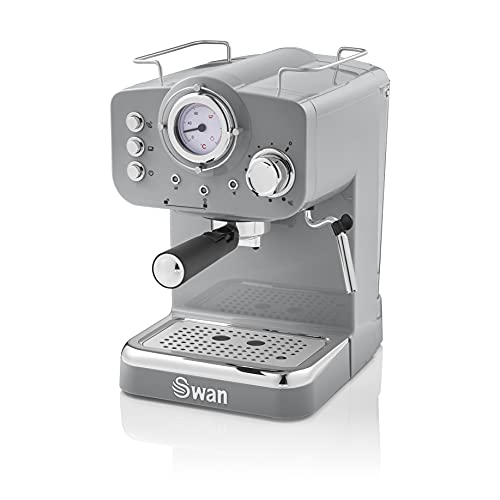How to Build a Professional Espresso Machine
This is an excellent choice for cafes and coffee shops who want to attract customers who are enthusiastic about barista and espresso skills. It's the official machine used for World Barista Championships and it really shows.
It is equipped with a reservoir of water so that the barista only needs to refill it throughout their shift. It also has steam wands with cool-touch technology and hot water taps for tea.
Water
A commercial espresso machine is required to produce a high volume of espresso based drinks efficiently. That's why these machines are built with stainless steel which is more durable and resistant to scratches and break. Espresso machines made of stainless steel make it easier to keep clean and maintained.
A good machine has a shut off valve for the water line in order to prevent the formation of limescale. This will ensure any repairs are restricted to the affected parts of the machine and won't affect the operation of the rest.
When you select your water, make sure to test it and treat it correctly to ensure the best results. For instance the distilled water can be restored by adding a tiny amount of minerals back into it. This can diminish its erosion properties and improve its taste, but it could also cause damage to certain machines. This is because the remineralized fluid will cause the boiler sensor to think that the machine is full when it's not. This could cause the machine to overheat, and eventually be damaged.
Grinder
The grinder is a crucial component of a successful espresso maker. It grinds a raw bean and turns it into a finely ground coffee that can be properly placed into the filter basket to produce an excellent extraction.
Professional-grade commercial machines include grinders that can be programmed for different drink sizes. This guarantees consistency in results each time. Super-automatic espresso machines go one step further by automating and programming the entire process from brewing to grinding to dispensing. These machines are often praised during Lab tests for being easy to use.
Semi-automatic or manual machines require more effort from the barista, but the results are worth it. This model was awarded an award known as the Good Housekeeping Coffee Award in 2022 for its smart dosing system that is able to measure and delivers the correct amount of coffee each time. It also has a low-pressure pre-infusion system to ensure smooth extraction and a milk frothing wand that performed well in our tests for producing thick, rich steamed milk.
Temperature

When it is time to make espresso, temperature plays a major factor in the taste and quality of your shots. If the water temperature is not at its ideal level, it could result in the extraction being impeded and may even result in bitter cups.
coffeee of the highest quality come with tools that help you maintain the right temperature of your water. A PID monitors and regulates temperature of water. The other way is by making use of a double boiler. You can use one boiler to heat steam and water for tea, while using another to heat water to the brewing temperature.
Carles explains how these systems can make a difference for large companies as well as baristas working from home. They make it easier for beginners to make the perfect shot of espresso because they are able to maintain an exact temperature and eliminate many of the variables that can alter the flavor profile. It is also easier for baristas who have more experience to get their espressos exactly how they would like.
Pressure
The pressure that an espresso machine makes use of is another element which affects the quality of the coffee it produces. Many espresso drinkers have noticed that their drinks taste different depending on the pressure used, even when all other factors remain constant.
The majority of commercial machines utilize 9 bars of pressure in order to make espresso. These machines are also likely to be pump-driven rather than steam-driven. Although there are machines with higher pressures but they usually require a more complex group head design to handle the increased pressure levels.
Although you might see espresso machines that advertise 15 or even 18 bars of pressure, nine bars is generally considered the gold standard for consistently excellent brews. These machines with higher pressures are generally smaller and designed for home use.
In comparison, 9 bar of pressure is four times more than the pressure exerted by your car tire. The more pressure an experienced espresso machine can apply more pressure, the better it'll be at extracting flavor from the coffee beans you love. It's worth investing in a premium machine that can deliver the best possible results.
Barista Skills
A barista needs to be able take and process orders quickly and accurately. This is particularly important when there is a lot of activity in the coffee shop. Having good customer service skills is also essential for building customer relationships and increasing business for the shop. This includes recognizing regular customers, resolving issues efficiently and remaining optimistic and friendly even in challenging situations.
The ability to multitask is usually required for a barista, as they may have to take orders as well as operate the cash register and then communicate orders to coworkers and respond to phone calls at the same time. This skill allows them to keep orders moving quickly to the customer and allows them to have a pleasant experience in the coffee shop.
It is essential for a barista's education in order to make various drinks using an espresso machine. This can be accomplished by studying the various types of coffee, trying the drinks in person and watching videos online. Many baristas find it helpful to take classes offered by various organizations.
